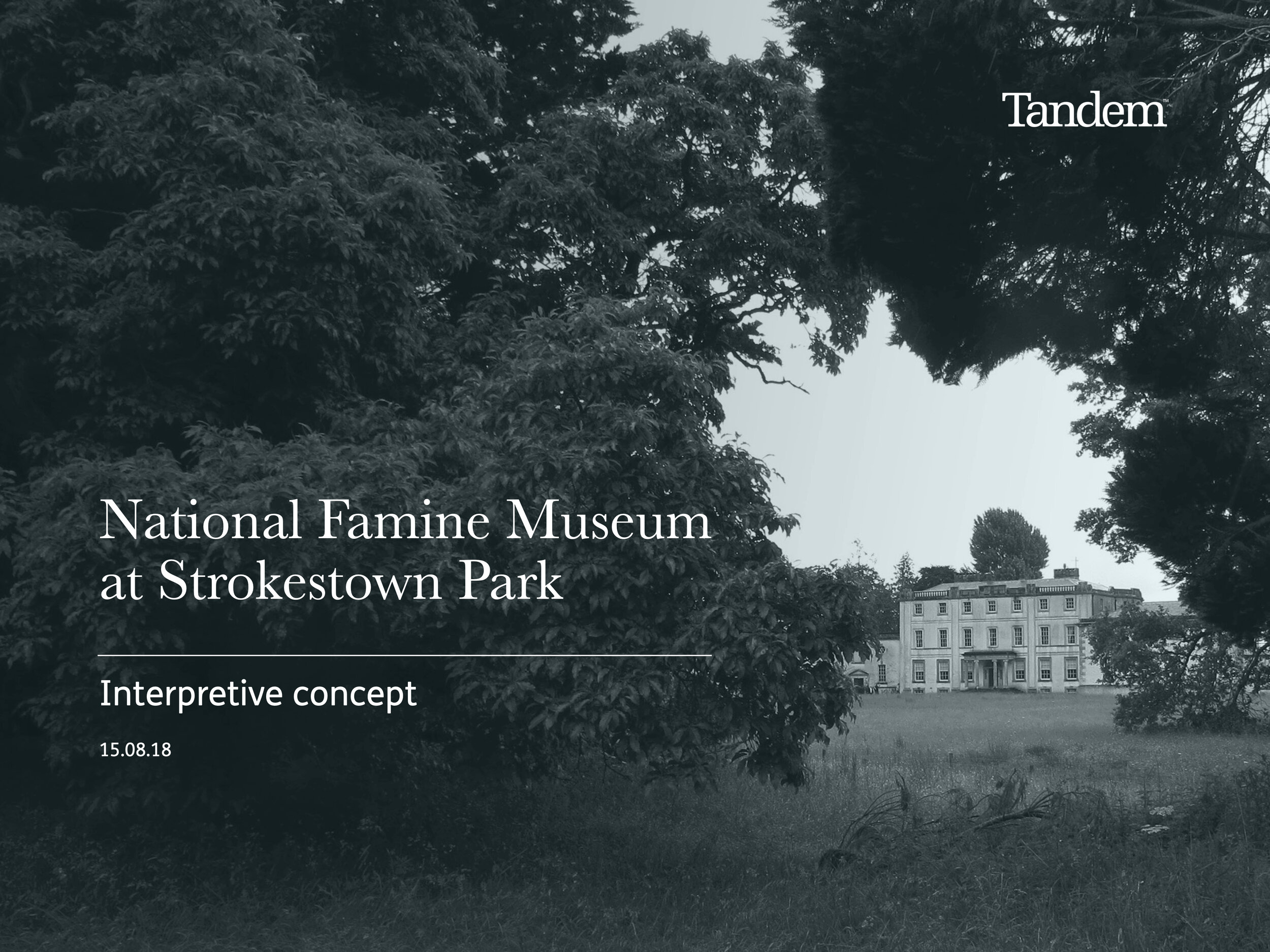“An extensive gallery refurbishment will re-establish the National Famine Museum at Strokestown Park as a must-visit Hidden Heartlands destination.”
In 2017, the Irish Heritage Trust were seeking support from Fáilte Ireland
for Stage 2 capital works and sought
an Interpretive Consultancy to deliver
a broad interpretation plan. The visitor offering extended across a substantial landscape, demesne, estate town, house and contents, the Irish National Famine Museum, Strokestown Park Archive and a walled garden. Tandem were contracted to deliver on the entire property including outdoor signage, visitor wayfinding and audience-specific interpretation. The Irish Heritage Trust were subsequently awarded funding in October 2019 and the delivery phase of the project started in March 2020.
Fáilte Ireland’s investment of € 3.9 million for the new National Famine Museum at Strokestown Park in County Roscommon is the largest investment to be made in a visitor attraction in Ireland’s Hidden Heartlands over the last 10 years. The total project cost, including funding from the owners of Strokestown Park House, Westward Holdings Ltd – in partnership with the Irish Heritage Trust – will be € 5.1 million.
The main project focus was to improve the visitor experience on site by creating the essential facilities and infrastructure necessary to welcome high numbers of visitors. By enhancing visitor satisfaction through impact
and engagement, and by creating opportunities to tell new and revitalised stories the project would create ‘kerb appeal’.
The interpretation plan involved
an ‘audience analysis’ including potential target audiences and objectives for the different visitor experiences. This culminated in the development of a ‘Core Principles for the Strokestown Visitor Experience’ document. This was to act as the foundation for future development and provide a benchmark to measure concepts and proposals against.
We also developed a Visitor Experience Plan to outline our approach to the development, showing how we prioritised the budget and used key priorities to select the most important elements of the visitor experience for improvement.
A suite of solutions were proposed
to build upon the outstanding work
to date at Strokestown. The interior exhibition gallery of the Famine Museum was redeveloped into a thematic journey, of staff and gentry, above and below stairs. A series of physical interactives, music and soundscapes were layered throughout to give an audio-sensory experience designed to immerse the visitor within the ‘frozen in time’ historic house. Audio-visuals, dioramas and a reflective space allow visitors to reflect on poignant and meaningful elements within the story. The approach incorporated non-English speaking visitors as well as ensuring that accessibility was a key focus.
Outdoors, the narrative is expanded
to the grounds and landscape beyond. A key challenge was ensuring clarity for the visitor regarding the multiple events, exhibitions, areas and facilities. By redesigning the arrival and welcome zones, visitors were offered a clear decision path of engagement.
An extensive gallery refurbishment will re-establish the National Famine Museum at Strokestown Park as a must-visit Hidden Heartlands destination for international and domestic tourists.

